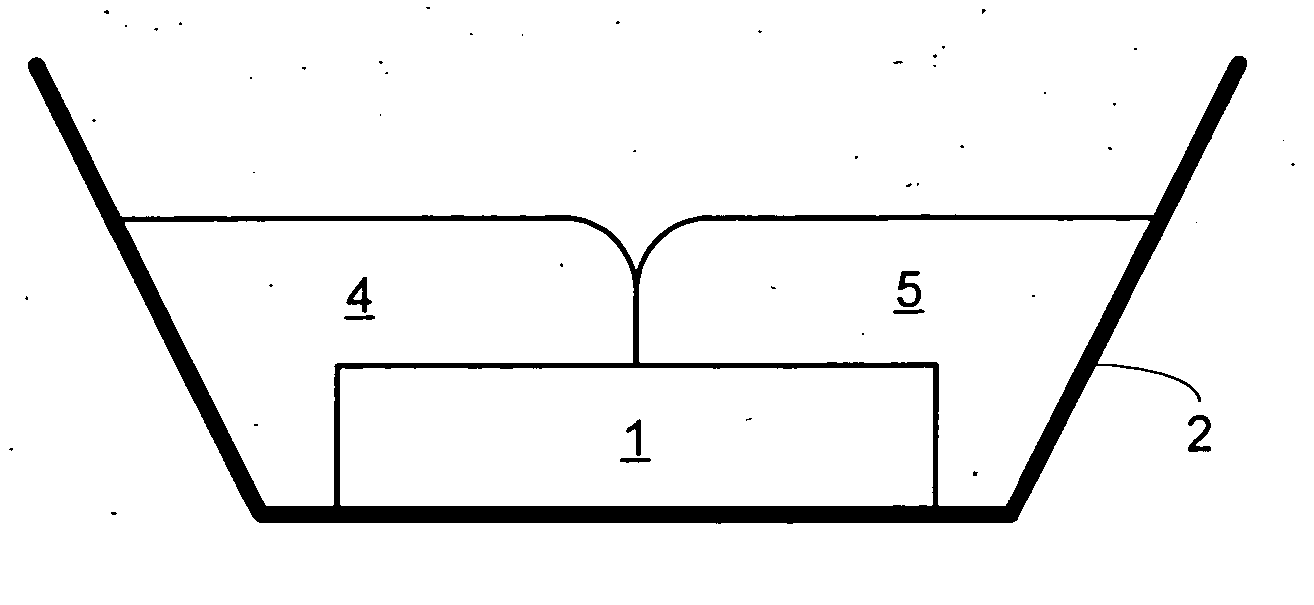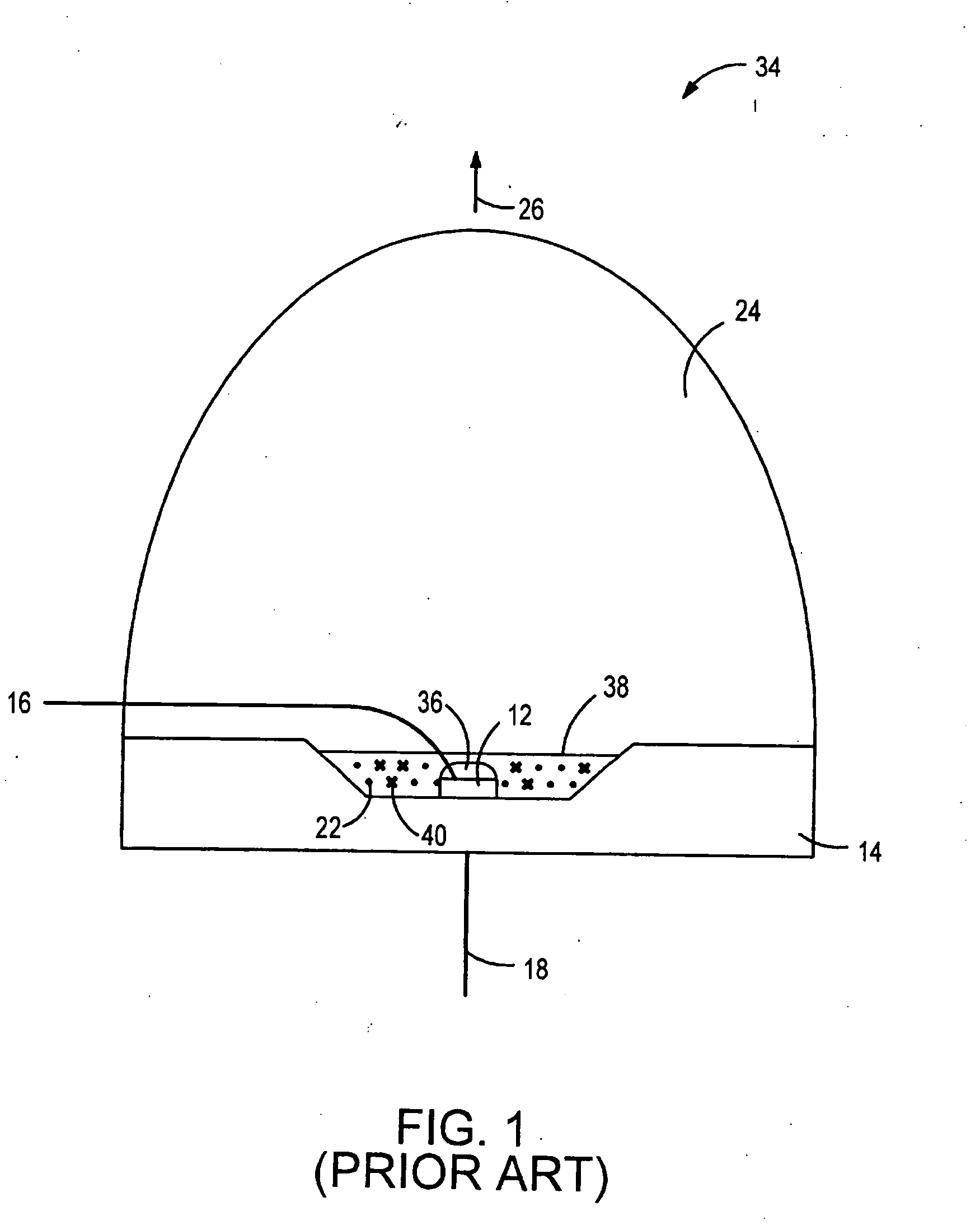Wavelength converted semiconductor light emitting devices
a technology of converted semiconductors and light emitting devices, applied in the direction of discharge tubes/lamp details, discharge tubes luminescnet screens, instruments, etc., can solve the problem that white light leds based on dichromatic approaches can only be used to a limited extent for general-purpose illumination
- Summary
- Abstract
- Description
- Claims
- Application Information
AI Technical Summary
Benefits of technology
Problems solved by technology
Method used
Image
Examples
Embodiment Construction
[0020] In accordance with embodiments of the invention, systems including multiple wavelength converting materials such as phosphors combined with semiconductor light emitting devices are disclosed. In the below description, “mixed” or “composite” light refers to the combination of light emitted by the semiconductor light emitting device and light emitted by all the phosphors in the system.
[0021] In some embodiments, a blue light emitting diode is combined with a yellow- or green-emitting phosphor and a red-emitting phosphor. Examples of suitable yellow- or green-emitting phosphors include (Lu1-x-y-a-bYxGdy)3(Al1-zGaz)5O12:Cea3+Prb3+wherein 03Al5O12:Ce3+ and Y3Al5O12:Ce3+; (Sr1-a-bCabBac)SixNyOz:Eua2+ (a=0.002-0.2, b=0.0-0.25, c=0.0-0.25, x=1.5-2.5, y=1.5-2.5, z=1.5-2.5) including, for example, SrSi2N2O2:Eu2+; (Sr1-u-v-xMguCavBax)(Ga2-y-zAlyInzS4):Eu2+ including, for example, SrGa2S4:Eu2+; and Sr1-xBaxSiO4:Eu2+. Examples of suitable red-emitting phosphors include (Ca1-xSrx)S:Eu2+ w...
PUM
 Login to View More
Login to View More Abstract
Description
Claims
Application Information
 Login to View More
Login to View More - R&D
- Intellectual Property
- Life Sciences
- Materials
- Tech Scout
- Unparalleled Data Quality
- Higher Quality Content
- 60% Fewer Hallucinations
Browse by: Latest US Patents, China's latest patents, Technical Efficacy Thesaurus, Application Domain, Technology Topic, Popular Technical Reports.
© 2025 PatSnap. All rights reserved.Legal|Privacy policy|Modern Slavery Act Transparency Statement|Sitemap|About US| Contact US: help@patsnap.com



